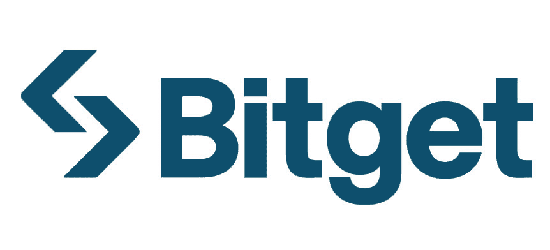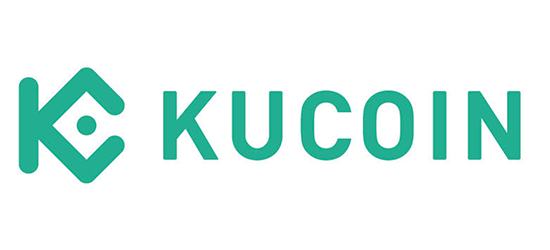
What is Crypto Mining and How to Mine Bitcoin? A Complete Beginner Guide
Learn everything about crypto mining in this in-depth article from different types of mining to pros and cons and how it works.
Since the initial release of Bitcoin and Blockchain in 2009 by Satoshi Nakamoto, crypto industry has come a long way. What started as a digital currency a few tech enthusiasts used in the early times has now grown into a global financial ecosystem.
With growth of Bitcoin, the process of crypto mining has become increasingly important as it is the only way of validating transactions and adding them to blockchain ledger.
In this process miners use computational power to solve complex Algorithm equations and help blockchain verify transactions and in return get rewarded for their services.
However, in determining the success of a crypto miner, difficulty and mining equipment such as powerful Hardware GPUs play a social role which can be expensive unless you have a good investment.
In this article, we will provide an in-depth overview of crypto mining for beginners, including how it works, mining pools, and whether or not it is profitable.
Disclaimer. Not financial advice. Do your own research. Don't risk funds you can't afford to lose. Before taking any action related to cryptocurrency mining, research the laws in your country and follow them.
Crypto Mining Explained
In order to better understand mining, first, we have to learn basics of Blockchain. If described in simple terms, blockchain is a decentralized distributed digital ledger where users can transfer data and track records across network of computers.
Instead of being controlled by a single entity, blockchain is distributed across a vast network of nodes, with each node containing the same copy of the entire network.

These nodes are made up of chains of blocks that contain records of transactions.
These transactions are validated and added to the network by miners who use computational power to solve complex mathematical equations. When a miner solves an equation and adds it to the blockchain, the other nodes on the same network also verify the transaction and then add to their copy of records.
This creates a secure and transparent system that can be used to transfer value without need for a central authority.
One of the key features this technology has is immutability. In other words when a block is added, it cannot be edited or deleted even by the one who created it.
This is because each block on the network contains a unique cryptographic signature which is almost impossible to guess. Even If a malicious actor tries to alter a block, they would also need to alter hash of every subsequent block, making it nearly impossible to tamper with data stored on blockchain.
This process of adding transactions records on the network of blockchain nodes is called mining.
It is a crucial aspect of how cryptocurrencies like Bitcoin, Dogecoin, Litecoin operate.
In Proof-of-Work consensus mechanism by utilizing the power of high-end computers miners solve complex algorithm problems to validate transactions as explained previously.
The first miner to solve an equation and add a block to the blockchain network is rewarded with newly created coins. This incentivizes miners to participate in network activities and secure it from malicious actors.
History of Crypto Mining
The history of crypto mining is a fascinating one. When Bitcoin was first introduced, network was relatively small, and it was easy to mine. Even at that time it was possible to mine Bitcoin using a personal computer or laptop. However, as network grew and more miners joined, the difficulty has increased overtime. This meant that now network users had to use more advanced equipment, like specialized mining rigs, to mine Bitcoin effectively.
In recent years, there has been a shift towards using renewable energy sources for crypto mining. This is because it consumes a significant amount of electricity, which can be costly and harmful to environment. Joining a mining pool can help to improve chances of earning a block reward. A pool is a group of miners who combine their computational power to mine cryptocurrencies. When a block is found, reward is distributed among members of pool, proportional to their contribution.
How To Mine Cryptocurrencies
It might seem like a difficult task for beginners since it requires specialized equipment, technical knowledge, and a lot of electricity. However, there are different ways to go about mining.
In this, below step-by-step beginner's guide, we will focus on How to mine Bitcoin and explain each step in an easy-to-understand manner. Remember that although Mining can be rewarding, it is important to be aware of potential risks and costs involved.

Let’s get started with step one, which is:
1. Getting a Bitcoin wallet
The first thing as a miner you need to do before starting mining Bitcoin is to get a Bitcoin wallet. This wallet will be used for Bitcoins and will allow you to send and receive transactions. There are different options for wallet types, such as desktop, mobile, hardware, and paper wallets.
Once you have chosen wallet type that suits your needs. The next step is is to download and install the wallet software. This process is simple and usually involves downloading software from wallet provider's website by following installation instructions.
After installing wallet, now you need to create a new wallet or recover an existing one if you already have one. Creating a new wallet involves choosing a secure password and writing down your wallet's seed phrase, which is a set of 12-24 words that allow users to recover their wallet in case of loss or damage.
It's important to note that you should always keep your seed phrase or private key safe and never share it with anyone. Losing this information can result in the permanent loss of your Bitcoins. Once you have set up your wallet, you can move on to the next step of joining a mining pool.
2. Join a mining pool
As mentioned earlier, mining crypto can be a difficult task for beginners. Joining a mining pool is a way to make process more manageable, as it enables miners to combine their resources and increase their chances of mining a block. To get started with a mining pool, users are free to research different options to find one that meets their requirements, such as payout structure, fees, and reputation. After choosing a mining pool, the next step is to create an account and configure mining software to connect to pool.
When setting up your mining software, users will need to enter their mining pool's server information and their personal account information. The software will then connect to pool and start mining according to pool's specific rules and payout structure. Keep in mind that some mining pools may have minimum payout thresholds or other requirements that every miner must need to meet before they can withdraw earnings. That’s why It's essential to read and understand pool's terms and conditions before joining.
Additionally, keep in mind that while being part of a mining pool can increase your chances of earning rewards, it also means sharing profits with other miners. Nevertheless, joining a mining pool can be a great way to learn more about mining and return get rewarded.
3. Get mining software
When it comes to mine BTC, mining software plays a crucial role in connecting your computer to network and enabling it to participate in transaction validation. There are various types of mining software available in the market, such as CGMiner, BFGMiner, NiceHash, and EasyMiner that allow users to mine cryptocurrencies.
It is important to choose software that is compatible with your operating system and hardware configuration. Once you have identified right software, the next step is to download and install it on your computer. This process may vary depending on software you choose, but most application providers offer clear instructions to guide you through installation process.
4. Get mining hardware
Now, next step is getting hardware equipment that are used to mine Bitcoin. The most common type of mining hardware is ASIC (Application-Specific Integrated Circuit) miner. There are also plenty of other alternative choices available as well, so choose whatever you like.
Once you have purchased hardware, next step is connecting it to your computer, installing necessary drivers and software, and configuring it to work with your mining software that you installed earlier.
5. Start mining
Once, you have your wallet, mining pool, software, and hardware set up, you can start mining with ease. All you need is to configure your:
- Software by entering your pool and wallet details.
- Then, connect to the pool to start mining with other miners.
- Finally, don’t forget to monitor your performance, such as hash rate, shares submitted, and earnings to better track cost/profitability.
6. Consider the risks and costs
Mining can be a risky and costly activity if you aren’t aware of Pros and Cons. So, in order to make your mining profitable, don’t forget to take note of risks involved, such as market volatility, hacking, and scams.
Types of Crypto Mining
When it comes to mining cryptocurrencies, there are several types of methods that people use. Each method has its own advantages and disadvantages, and some may be more suitable for certain users than others. In this section, we will discuss most popular types of crypto mining.
CPU Mining
It is earliest form of cryptocurrency mining, and involves using a computer's central processing unit (CPU) to mine blocks. This method is most basic and requires least amount of resources, making it accessible to almost anyone with a computer. However, it is not very efficient and has become obsolete as difficulty of mining has increased over time in recent few years.
Despite its inefficiency, CPU mining can still be used to mine some cryptocurrencies with lower difficulty levels, such as Monero and Dogecoin. If you are interested in CPU mining, you need to ensure that your computer has a powerful processor and does have necessary software installed that is compatible with your CPU.
Some tips for CPU mining include:
- Optimizing your CPU settings.
- Using multiple mining threads.
- Reducing other system activities to improve performance.
GPU Mining
GPU mining is another popular method of mining cryptocurrencies. In this technique user utilize a computer's graphics processing unit (GPU) power to handle complex calculations required for mining. GPUs are specifically designed to handle these kinds of calculations more efficiently than a regular computer's CPU.
As a result, it is generally considered to be more effective than CPU mining. This method is particularly popular for mining cryptocurrencies like Dogecoin, Litecoin and more. The worth noticeable point about this method is that users don't need any specialized hardware or equipment, making it a more accessible option for people who want to get into mining without investing in expensive equipment.
ASIC Mining
CPU and GPU mining may not always be efficient for mining cryptos, especially for popular coins like Bitcoin. That's where ASIC mining comes into play. ASIC mining involves use of specialized hardware, known as application-specific integrated circuits (ASICs), which are designed specifically for crypto. ASICs are much more efficient than CPUs and GPUs, as they are built to perform a single task, that is mining, and can solve complex equations much faster than traditional hardware.

AvalonMiner 721
Youwei-han/CC BY-SA 4.0
Although ASICs are expensive to purchase, they offer a much higher hash rate than CPUs or GPUs. The high hash rate of ASICs allows miners to validate transactions quickly and earn more rewards for their efforts.
In recent years, this method has become preferred method for crypto mining, as it is faster and more efficient than traditional methods. ASIC mining is constantly evolving, with new models being developed and released regularly, which further improves mining efficiency and profitability. However, it is important to note that it is not suitable for all cryptocurrencies, and some newer Coins are designed to resist ASIC mining in order to keep network more decentralized.
Cloud Mining
It is another unique form of mining where users rent hardware equipment from a third-party provider, who then takes care of maintenance and operation. This method is popular among users who are beginner and do not have technical knowledge or resources to set up their own mining rig. However, cloud mining is often criticized for being less profitable than other forms of mining, as users have to pay a fee to provider for rental of equipment.
Mobile Mining
Mobile mining is a newer method that involves using a smartphone or tablet to mine Crypto. This method is not as efficient as other methods, as mobile devices are not designed for mining and have limited processing power. However, it can be a good option for users who want to try mining without investing in expensive hardware.
Pros and Cons of Crypto Mining
Crypto mining can offer several advantages, but it also has some drawbacks. Here are some pros and cons of crypto mining:
Pros:
- Potential to earn significant profits from mining cryptocurrencies.
- Offers an alternative investment opportunity to traditional stocks and bonds.
- It can be done from any part of the world wherever users have access to internet connection and do have necessary hardware equipments.
- Provides an opportunity to learn about blockchain technology and its applications.
- Mining rewards incentivize miners to secure network and maintain its integrity.
- Some cryptocurrencies can only be acquired through mining, creating exclusivity and rarity.
Cons:
- High initial costs for hardware and electricity, which can make it unprofitable for small miners.
- Difficulty levels increase over time, making it harder to mine cryptocurrencies.
- Increased competition from other miners can lower profits.
- Can generate a large amount of heat and noise, making it impractical for some living spaces.
- It can contribute to carbon footprint, as it requires significant amounts of energy.
- Requires constant monitoring and maintenance to ensure optimal performance.
Conclusion
To sum it up, crypto mining has become an increasingly attractive option for people looking to earn profits through digital currencies. However, before jumping into it, first it's important to consider both benefits and drawbacks.
While mining can be beneficial, it can also be expensive and time-consuming. As it involves significant investments in terms of hardware, software, and electricity, and may not always result in significant profits. Furthermore, the mining industry since Bitcoin's mass adoption has become highly competitive, and big mining operations tend to dominate the market.
Despite these challenges, crypto mining can still be a fulfilling and profitable experience for those who are willing to invest time and resources. With emergence of new technologies and a constantly evolving crypto market, there will be plenty of opportunities for miners to participate in this dynamic industry.
In short, while crypto mining may not be for everyone, it certainly presents an exciting opportunity for those who are willing to put in the effort and take necessary steps to succeed. As with any investment, careful consideration and research are key, but potential rewards of successful crypto mining can make it all worthwhile.
Frequently Asked Questions
Why is mining important?
It is an essential process for cryptocurrencies to function. Miners verify transactions, secure the network, and add new coins to circulation. Without mining, the decentralized nature of cryptocurrencies would be compromised.
How does mining confirm transactions?
Mining confirms transactions by solving complex mathematical equations, which are then added to the blockchain as a block. The miners who solve these equations first earn rewards, and the transaction is confirmed and added to the public ledger, making it immutable and tamper-proof.
Why does mining use so much electricity?
A significant amount of electricity to power the mining hardware and keep it cool. The more powerful the mining hardware, the more electricity it consumes. As the difficulty of mining increases, so does the energy consumption required to mine cryptocurrencies.
How do I start mining cryptocurrency?
To start mining cryptocurrency, miners need to choose the mining hardware and software that suits their needs and budget. After that join a mining pool to increase your chances of earning rewards.
Is crypto mining profitable?
Yes, it is profitable, but multiple factors does count such as mining rigs, cost of electricity and more. Hence, it's important to do your research and calculate potential profits and risks before investing in mining.
How long will it take to mine 1 Bitcoin?
The time it takes to mine 1 bitcoin depends on several factors, such as hash rate of mining hardware, the mining difficulty, and price of bitcoin. With current mining difficulty and average hash rate, it can take several years to mine 1 bitcoin on your own. However, joining a mining pool can increase your chances of earning rewards more quickly.


























